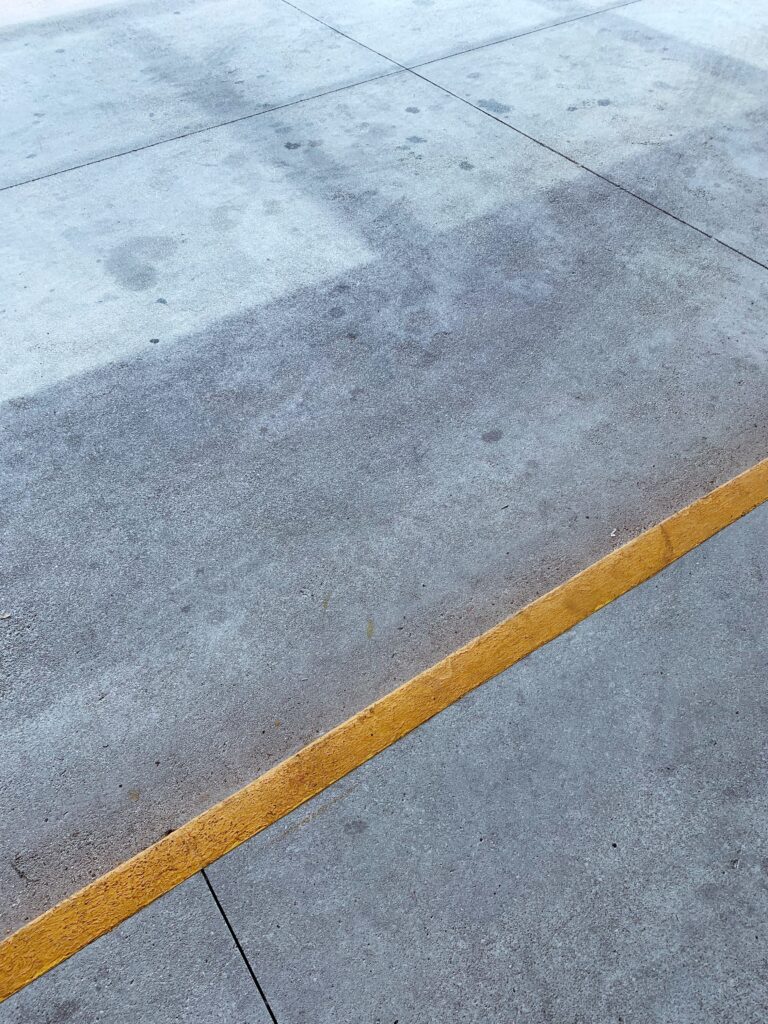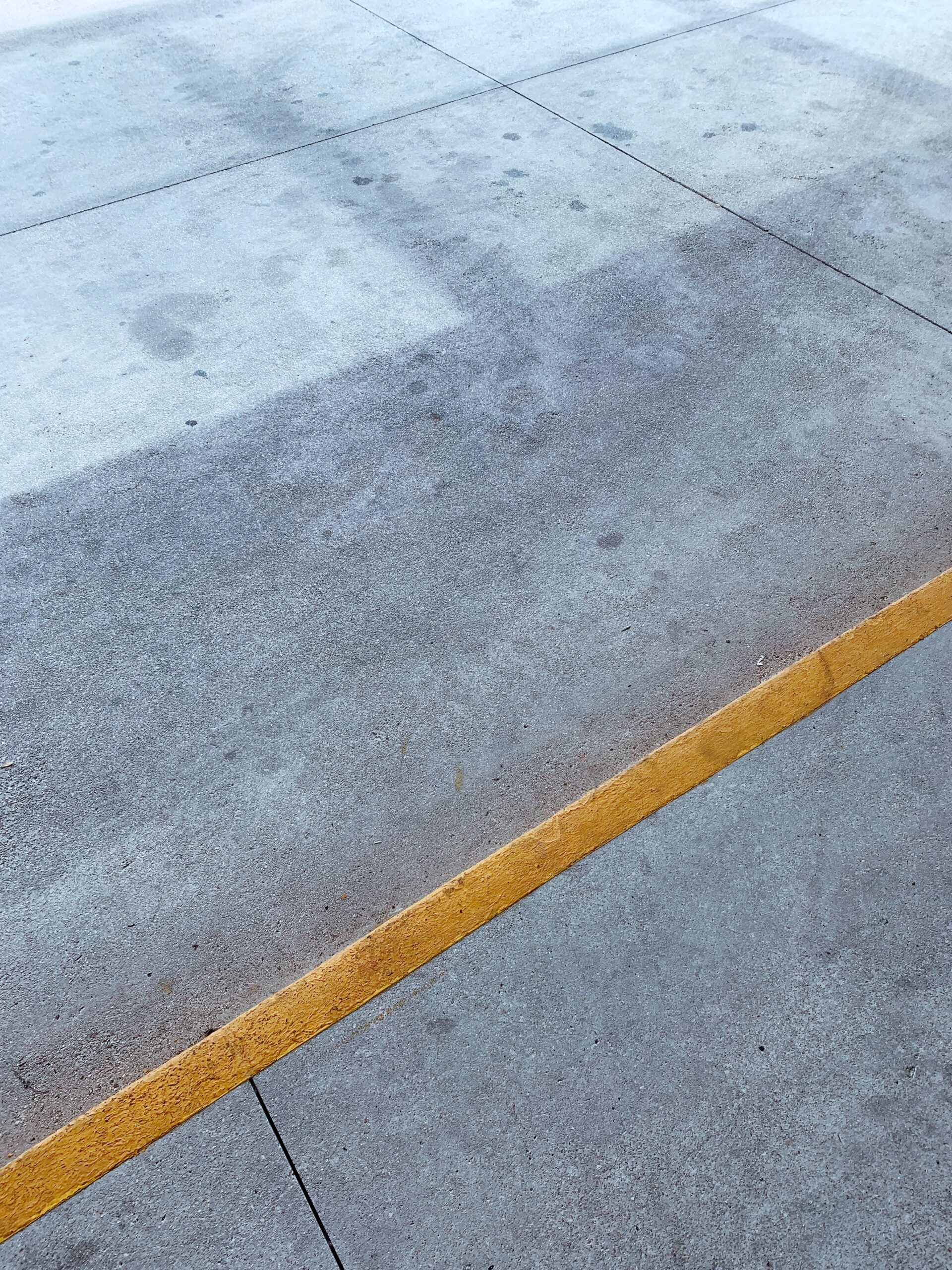Hey there! If you’re dealing with a leaking concrete septic tank lid, we’ve got you covered. This article will guide you through the steps to fix the problem and ensure your septic system is working efficiently. With a few simple tools and some patience, you’ll be able to tackle this issue and save yourself from potential headaches down the line. So, let’s roll up our sleeves and get that leak fixed!

Understanding the problem
Identifying a leak
When it comes to septic systems, a leaking concrete septic tank lid can be a major headache. It is important to be able to identify whether or not your septic tank lid is leaking in order to address the issue promptly. Signs of a leak may include a foul odor around the septic tank area, pooling water or wet patches on the ground above the tank, or even sewage backups in your plumbing fixtures. If you notice any of these signs, it’s time to investigate further.
Causes of a leaking septic tank lid
A leaking septic tank lid can be caused by various factors, such as age and deterioration of the concrete lid, poor installation, or shifting ground. Over time, the lid may develop cracks or gaps, allowing water or sewage to escape. Harsh weather conditions, such as extreme temperature changes, freezing, or heavy rainfall, can also contribute to the degradation of the lid. Additionally, if the lid was not properly sealed during installation, it can lead to leaks.
Importance of a well-maintained septic tank
Proper maintenance of your septic tank is crucial to avoid costly repairs and potential health hazards. A well-maintained septic tank lid helps prevent leaks, sewage backups, and contamination of groundwater. Regular inspections, repairs, and proper usage can significantly extend the lifespan of your septic system and ensure its efficient operation. By addressing a leaking septic tank lid promptly, you can safeguard your property and the environment.
Inspecting the septic tank
Safety precautions before inspection
Before inspecting a septic tank, it is essential to prioritize your safety. Make sure to turn off any electrical power sources near the tank and wear appropriate protective gear, including gloves and goggles. Avoid smoking or using any open flames in the vicinity, as flammable gases may be present. Keep in mind that septic tanks can contain toxic gases, so be cautious and consider using a gas detector or calling a professional if you are unsure.
Tools required for inspection
To properly inspect a septic tank, you will need a few essential tools. These include a flashlight to illuminate the interior of the tank, a measuring tape to record dimensions, and a camera or smartphone to capture images for documentation purposes. Additionally, a septic tank riser or lid lifter can be useful to access the lid safely. It is important to have these tools readily available before starting the inspection.
How to identify specific leak locations
During the inspection, carefully examine the concrete septic tank lid for any visible cracks, gaps, or signs of deterioration. Use your flashlight to check the interior of the tank for any water or sewage leaks. Pay close attention to the area where the lid meets the tank walls, as this is a common location for leaks to occur. Inspecting the surrounding soil for wet patches or pooling water can also help identify potential leak locations.
Importance of inspection documentation
Documenting the findings of your septic tank inspection is crucial for future reference and maintenance. Take clear and detailed pictures of any visible cracks or leaks, record measurements, and note the location of the leaks. This documentation will not only assist you during the repair process but also serve as a valuable reference if you need to consult a professional or file an insurance claim.
Materials and tools required for repair
Choosing the right repair material
When it comes to repairing a leaking concrete septic tank lid, selecting the appropriate repair material is essential to ensure a long-lasting and effective fix. Epoxy-based sealants specifically designed for septic system repairs are commonly used. These sealants have excellent adhesion to concrete and can effectively seal cracks and gaps. It is important to choose a sealant that is resistant to chemicals and can withstand the harsh conditions within a septic tank.
Essential tools for repair
In addition to the repair material, you will need a few tools to successfully repair a leaking septic tank lid. These tools may include a wire brush to clean the surface and remove any loose debris, a putty knife or trowel to apply the sealant, and a caulking gun or syringe for precise application. It is also important to have plenty of rags or absorbent materials on hand to clean up any spills or excess sealant.
Safety gear for protection
Repairing a leaking septic tank lid can expose you to potentially hazardous materials. Therefore, it is essential to wear appropriate safety gear. Protective gloves, safety goggles, and a mask or respirator are necessary to protect yourself from contact with sewage, chemical fumes, or airborne particles. Prioritize your safety and make sure to use these safety measures throughout the repair process.
Where to purchase necessary materials and tools
You can typically find the necessary repair materials for a leaking septic tank lid at your local hardware store, septic system supply store, or online retailers. Look for reputable brands and products specifically designed for septic system repairs. For tools, consider renting or borrowing them if you don’t have them already. Alternatively, you can contact a professional septic system contractor who may provide the necessary materials and tools as part of their services.
Preparation before repair
Cleaning the area
Before starting the repair process, it is crucial to clean the area surrounding the leaking septic tank lid. Remove any debris, dirt, or vegetation that may hinder the repair or contaminate the sealant. Use a wire brush or a pressure washer to thoroughly clean the concrete surface. Make sure the area is dry before proceeding with the repair.
Positioning the correct safety measures
Once the area is clean, it is essential to properly position the necessary safety measures. Ensure that any electrical power sources near the septic tank lid are turned off. Place warning signs or barriers to prevent accidental access by children or pets. If the repair area is indoors, consider using plastic sheeting or tarps to protect the surrounding surfaces from accidental spills or splatters.
Specifying the right weather for repair
The weather conditions during the repair process can significantly impact the effectiveness of the repair. It is advisable to choose a day with mild temperatures and low humidity to ensure proper curing of the sealant. Avoid working in extreme heat or cold, as it may affect the adhesion and drying time of the repair material. Additionally, avoid rainy or windy conditions, as these can interfere with the application and curing process.
Ensuring you have the right equipment
Before starting the repair, double-check that you have all the necessary tools and equipment readily available. This includes the repair material, as well as the tools mentioned earlier, such as a wire brush, putty knife or trowel, and a caulking gun or syringe. Having everything prepared beforehand will save you time and prevent any delays during the repair process.

Repairing a small leak
Step-by-step process
Repairing a small leak in a concrete septic tank lid can be a relatively straightforward task. Follow these step-by-step instructions to fix the leak effectively:
- Clean the area around the leak, ensuring it is dry and free of debris.
- Use a wire brush to remove any loose material and create a clean surface for the repair.
- Apply the selected repair material to the crack or gap, using a putty knife or trowel.
- Ensure the sealant is evenly spread and fills the entire crack or gap.
- Smooth the surface of the repair material with the putty knife or trowel, ensuring it is level with the surrounding area.
- Allow the repair material to cure according to the manufacturer’s instructions.
- Once cured, check the repaired area for any additional leaks or cracks, and make any necessary touch-ups.
- Clean up any excess sealant and dispose of it properly.
Tips for effectiveness
To ensure the effectiveness of the repair, follow these tips:
- Thoroughly clean and dry the repair area before applying the sealant to promote better adhesion.
- Apply the repair material generously to allow for proper filling of cracks or gaps.
- Smooth out the surface of the sealant to prevent water or debris from accumulating on the repaired area.
- Avoid any contact with the repair area until the sealant is fully cured.
- Regularly inspect the repaired area for any signs of new leaks or deterioration.
Possible challenges and how to overcome them
While repairing a small leak in a concrete septic tank lid is generally a straightforward process, there can be some challenges along the way. Here are a few common challenges and their solutions:
- Difficult access: If the leak is in a hard-to-reach area, consider using tools like extended handle putty knives or trowels to access the repair site more easily.
- Excessive cracking: In cases where the concrete lid has extensive cracking, it may be necessary to consult a professional or consider a full lid replacement. Repairing individual cracks may not provide a long-term solution.
- Difficulties in achieving proper adhesion: Ensure that the repair material you choose is suitable for the specific type of concrete used in your septic tank lid. Follow the manufacturer’s instructions for optimal adhesion and consider the use of primers or adhesion promoters if needed.
By addressing these challenges and taking the necessary precautions, you can successfully repair a small leak in your concrete septic tank lid.
Repairing a large leak
Procedures to follow
Repairing a large leak in a concrete septic tank lid may require additional steps and considerations due to the size and severity of the leak. Follow these procedures to effectively repair a large leak:
- Assess the extent of the leak and determine if a repair is feasible. In some cases, a large leak or extensive damage may necessitate a complete replacement of the septic tank lid.
- If a repair is possible, begin by cleaning the repair area and removing any loose debris or damaged sections of the lid.
- Apply a high-quality concrete patching compound to the damaged areas, following the manufacturer’s instructions for mixing and application.
- Use a trowel or adhesive to securely attach reinforcing mesh or rebar to the patching compound for added strength.
- Apply additional layers of patching compound as necessary to fully cover and reinforce the repaired areas.
- Smooth out the surface of the repair, ensuring it is level with the surrounding lid.
- Allow the patching compound to cure thoroughly before subjecting it to any load or pressure.
- After curing, thoroughly inspect the repaired lid for any remaining leaks or areas in need of touch-ups.
What to do if repair is not possible
In some cases, a repair may not be possible due to the size, extent, or severity of the leak in your concrete septic tank lid. If this is the case, it is crucial to address the issue promptly to prevent further damage or potential hazards. Consider consulting a professional septic system contractor to evaluate the situation and provide recommendations for a lid replacement. They will have the expertise and equipment necessary to safely and effectively replace a septic tank lid.
Dealing with complex situations
Repairing a large leak in a concrete septic tank lid can be a complex task, especially if there are multiple cracks or widespread damage. In such situations, it is essential to assess the overall condition of the septic tank and consider the possibility of a full lid replacement. A professional septic system contractor can provide valuable guidance, perform a thorough inspection, and propose appropriate solutions tailored to the specific complexities of your situation.

Maintenance after repair
How to maintain the repaired lid
After successfully repairing a leaking concrete septic tank lid, proper maintenance is essential to ensure its longevity and prevent future leaks. Follow these maintenance tips:
- Conduct regular visual inspections of the lid to check for any signs of new cracks, gaps, or deterioration.
- Keep the lid area clean and free of debris or vegetation to prevent potential damage or interference with the sealant.
- Avoid placing heavy objects or driving vehicles over the septic tank lid to prevent excessive stress or cracking.
- Regularly clean and inspect the septic system itself to ensure its proper function and prevent any issues that could impact the lid.
Preventing future leaks
In addition to maintaining the repaired lid, there are measures you can take to prevent future leaks in your concrete septic tank lid:
- Avoid excessive loads or heavy machinery near the septic tank lid that could cause stress or damage.
- Regularly pump and maintain your septic system to prevent overflows or backups that could put pressure on the lid.
- Direct water runoff away from the septic tank area to prevent excessive saturation and potential lid damage.
- Practice proper septic system usage, such as avoiding flushing non-biodegradable materials or using excessive amounts of household chemicals that could degrade the lid.
By following these preventive measures, you can minimize the risk of future leaks and prolong the lifespan of your concrete septic tank lid.
Signs of possible leak reoccurrence
Despite your best efforts, there is always a possibility of leak reoccurrence in a concrete septic tank lid. Be vigilant for the following signs that may indicate a potential leak:
- Foul odors around the septic tank area or within your plumbing fixtures.
- Wet patches, pooling water, or damp soil above the septic tank.
- Slow draining or backups in your sinks, toilets, or other plumbing fixtures.
- Unusually lush or greener vegetation around the septic tank area, indicating possible nutrient-rich wastewater leakage.
If you notice any of these signs, it is important to promptly investigate and address the issue to prevent further damage or health hazards.
When to call a professional
While many small leaks in concrete septic tank lids can be repaired by homeowners, certain situations may require the expertise of a professional septic system contractor. Consider calling a professional if:
- The leak is extensive or the lid is severely damaged.
- Previous repair attempts have been unsuccessful.
- You are unsure of the appropriate repair method or materials.
- The septic system itself is showing signs of malfunction or requires maintenance.
- You prefer to have the peace of mind and assurance that comes with professional expertise.
A professional septic system contractor can assess the situation, provide expert advice, and ensure that the necessary repairs or replacements are carried out safely and effectively.
Factors affecting the success of the repair
Quality of the repair material
The quality of the repair material used plays a significant role in the success and longevity of the repair. Investing in high-quality, septic system-specific sealants and patching compounds ensures proper adhesion, resistance to chemicals, and durability against harsh septic tank conditions. Choose reputable brands and products, and follow the manufacturer’s instructions for optimal results.
Experience level of the person performing the repair
The experience and skill level of the person performing the repair can influence the success of the repair. If you are not confident in your abilities or have limited experience with concrete repairs, it may be advisable to seek professional assistance. Experienced professionals have the knowledge and expertise to assess the situation accurately, choose the right repair method, and execute the repair effectively.
Size and complexity of the leak
The size and complexity of the leak in the concrete septic tank lid can impact the repair process. Small, straightforward cracks or gaps are generally easier to repair, while large leaks or extensive damage may require more complex procedures or even a lid replacement. Assess the severity of the leak and consider the level of repair expertise required before proceeding.
Weather conditions during repair
Weather conditions during the repair process can affect the effectiveness of the repair. Extreme temperatures, high humidity, or rainy conditions can hinder the adhesion and curing of the repair material. Choose a suitable day with mild temperatures, low humidity, and dry conditions for optimal results. If weather conditions are unfavorable, consider postponing the repair or consulting a professional who can provide a suitable environment for repair.

Choosing professional services
When is it right to call a professional
Knowing when to call a professional for a leaking concrete septic tank lid is essential to ensure the best outcome for your situation. Consider calling a professional in the following circumstances:
- The leak is extensive, complex, or beyond your skill level.
- Previous repair attempts have been unsuccessful.
- The septic system is experiencing additional issues or requires maintenance.
- You prefer to have the assurance and expertise of professionals.
Professional septic system contractors have the necessary knowledge, experience, and equipment to handle various septic system repairs, including concrete septic tank lid leaks. They can accurately assess the situation, recommend appropriate solutions, and carry out the repairs with precision and efficiency.
What to look for in a professional service
When selecting a professional septic system contractor, consider the following factors:
- Licensing and certification: Ensure that the contractor is properly licensed and certified in septic system repairs.
- Experience and expertise: Look for contractors with a proven track record of successfully repairing and maintaining septic systems.
- Reputation and references: Seek recommendations from friends, family, or neighbors who have used the services of reliable septic system contractors. Check online reviews and testimonials for further insight.
- Insurance coverage: Verify that the contractor carries adequate insurance coverage to protect against any unforeseen accidents or damages that may occur during the repair process.
- Cost estimates: Obtain detailed cost estimates from multiple contractors and compare them to ensure fair pricing.
- Warranty or guarantee: Inquire about any warranties or guarantees provided by the contractor, ensuring that any work performed is covered for a reasonable period.
- Professionalism: Assess the contractor’s level of professionalism, including communication skills, responsiveness, and adherence to deadlines.
By considering these factors, you can make an informed decision and choose a professional septic system contractor who meets your specific needs and expectations.
Cost implications for professional repair
The cost of professional repairs for a leaking concrete septic tank lid can vary depending on factors such as the extent of the leak, the complexity of the repair, and the region in which you reside. It is advisable to obtain multiple cost estimates from reputable contractors to ensure fair pricing. While professional repairs may come with a higher upfront cost compared to DIY repairs, they often provide more reliable and long-lasting solutions.
Preparation guidelines for expert repair
If you decide to hire a professional for a leaking concrete septic tank lid repair, make sure to follow these preparation guidelines:
- Research and select a reputable septic system contractor with expertise in concrete lid repairs.
- Collect any relevant documentation, including inspection reports, previous repair records, and maintenance records, to provide the contractor with a comprehensive understanding of the situation.
- Clean the septic tank area and ensure easy access to the lid for the contractor.
- Clear any potential obstacles or hazards that may interfere with the repair process.
- Communicate your expectations, concerns, and any specific requirements to the contractor before the repair begins.
By adequately preparing for the professional repair, you can help facilitate a smooth and efficient process, increasing the likelihood of a successful and satisfactory outcome.
Dealing with recurrent leaks
Determining why leaks keep happening
If you are experiencing recurrent leaks in your concrete septic tank lid, it is crucial to determine the underlying cause to address the issue effectively. Common reasons for recurrent leaks include:
- Shifting ground due to soil erosion, excessive moisture, or inadequate drainage.
- Poor installation or improper sealing of the lid during initial construction or previous repairs.
- Age-related deterioration of the lid, especially if it was not designed for long-term durability.
- External factors such as extreme weather conditions or nearby construction activities.
By identifying the cause, you can implement targeted solutions and preventive measures to prevent future leaks.
How to improve septic tank maintenance
Improving septic tank maintenance is key to preventing recurrent leaks and other septic system issues. Follow these steps to enhance your septic tank maintenance:
- Schedule regular professional inspections and maintenance of your septic system.
- Adhere to proper usage guidelines, including avoiding flushing non-biodegradable materials and limiting excessive water usage.
- Have your septic tank pumped at recommended intervals to prevent sludge buildup and excess strain on the lid.
- Direct rainwater away from the septic tank area through proper drainage and landscaping techniques.
- Educate yourself and your household members about the proper care and maintenance of septic systems.
By adopting these practices, you can significantly reduce the likelihood of recurrent leaks and prolong the lifespan of your concrete septic tank lid.
Anti-leaking mechanisms
To further prevent recurrent leaks in a concrete septic tank lid, consider implementing additional anti-leaking mechanisms. These may include:
- Installing a septic tank riser or extension to elevate the lid above ground level, minimizing contact with water and soil.
- Applying a protective coating or sealant specifically designed for septic tank lids to enhance their resistance to moisture and degradation.
- Using leak detection systems that notify you of any leaks or water level changes within the septic tank, allowing you to address the issue promptly.
- Regularly inspecting the lid and surrounding area for any signs of potential leaks or damage, enabling preventive action.
These anti-leaking mechanisms provide an extra layer of protection and assist in maintaining a leak-free septic tank lid.
When to consider tank replacement
In some cases, recurrent leaks in a concrete septic tank lid may indicate more significant issues with the overall septic system. If you find yourself repeatedly dealing with leaks or if the tank itself shows signs of deterioration or failure, it may be necessary to consider a septic tank replacement. A professional septic system contractor can assess the situation, determine the best course of action, and guide you through the replacement process to ensure a reliable and efficient septic system.
By addressing recurrent leaks promptly, implementing preventive measures, and considering appropriate interventions, you can protect your property, the environment, and the integrity of your septic system for years to come.
In conclusion, a leaking concrete septic tank lid is a problem that should not be taken lightly. By understanding the causes and importance of proper maintenance, inspecting the tank accurately, choosing the right materials and tools for repair, and following proper procedures, you can successfully fix small and large leaks. Maintenance after repair, factors affecting the success of the repair, and when to consider professional services are crucial aspects to consider. By addressing recurrent leaks and improving septic tank maintenance, you can prevent future leaks and ensure the overall longevity and functionality of your septic system. Remember, regular inspections, repairs, and preventive measures are key to a well-maintained septic tank and avoiding costly repairs.

